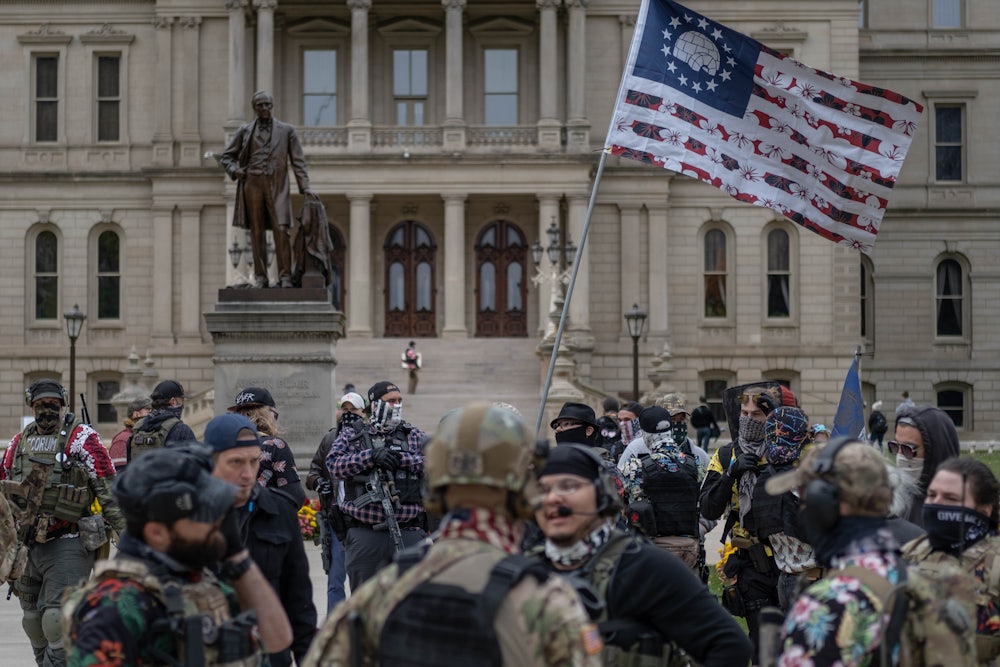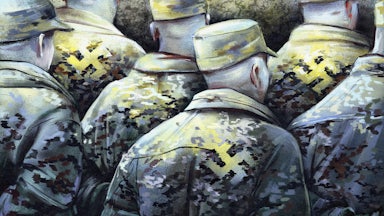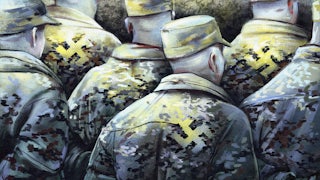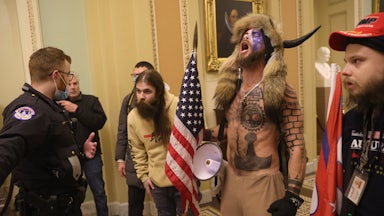“OK, well how’s everyone feel about kidnapping?” a 37-year-old weight lifter and militia member named Adam Fox asked last July, over an encrypted chat with a militia group called the Wolverine Watchmen. No one responded. The streets that summer had exploded, first with protesters demanding an end to policing after a Minneapolis police officer murdered George Floyd in May, then with far-right opportunists trailing racial justice activists and antifacist groups. A sitting senator mused about sending in federal troops, and the president wished he had gone even further. As a bitter Election Day drew nearer, fears of white nationalist terrorism, mobilized in response to the pandemic and protests, grew more tangible. So when the president told his supporters to “LIBERATE MICHIGAN” from its governor’s Covid-19 restrictions, and armed groups stormed the state Capitol, it looked something like an endorsement. And then, when the Department of Justice announced it had foiled a “deeply disturbing” plot to kidnap the state’s governor, Gretchen Whitmer, at least one disaster appeared to have been averted. Fox and the other “alleged extremists,” as an assistant special agent in charge described them, were arrested and charged with conspiracy in connection with the plot.
It’s easy to look back now at Michigan in 2020 and see hints of the insurrection to come in 2021. How seriously was the Justice Department taking the threat of white nationalists and other far-right groups? The thwarted, alleged Michigan kidnapping plot seemed to offer an example of the government doing its job responding to the threat, and a template for what future investigations should look like. But what appears to be emerging, according to a BuzzFeed News investigation published this week, is an old pattern: Scratch the surface of an FBI anti-terrorism investigation, and you may find people accused of terrorism who would not have been capable of such acts but for the government’s involvement.
Typically, these cases using informants to prod alleged extremists along have largely targeted young Muslim and Black men. So to see those tactics used against white supremacist groups might even seem like the FBI just doing its job. To suggest that those tactics “work” when they fall on far-right plots allegedly carried out by white men is to accept their lawfulness, or even their utility in addressing actual threats of violence. With “anti-terror” enforcement offered as the solution, ensuring our safety becomes about what a prosecutor can provide—which, as these cases show, can rest more on appearances than tangible change.
Prosecutors claim that the accused plotters took concrete steps toward carrying out the plot, and the defendants, while they “have not denied participating in training events, attending meetings, and communicating with other defendants,” BuzzFeed News reports, “claim that no actual conspiracy to kidnap the governor ever existed.” The line between cosplaying far-right violence and carrying it out may again be up for debate here, as it has (unconvincingly) post–January 6. That may also be an easier debate to have, rather than dig back into just this century’s examples of “terror plots” that were not as law enforcement officials represented them.
In an investigation of the Michigan plot, BuzzFeed News’s Ken Bensinger and Jessica Garrison conclude, “informants, acting under the direction of the FBI, played a far larger role than has previously been reported. Working in secret, they did more than just passively observe and report on the actions of the suspects. Instead, they had a hand in nearly every aspect of the alleged plot, starting with its inception. The extent of their involvement raises questions as to whether there would have even been a conspiracy without them.” At least 12 informants played a role in the Justice Department’s conspiracy case. According to interviews and documents reviewed by the reporters, those informants did everything from organize meetings of alleged plotters, cover their hotel and travel costs, and encourage them to collaborate and advance their plans.
Take Adam Fox, the 37-year-old weight lifter, who, according to his girlfriend, smoked weed and posted to Facebook a lot. He was photographed in Lansing, at the state Capitol, in boogaloo regalia—a Hawaiian shirt and a rifle. He’s the one who went on to say, according to a search warrant request, “Snatch and grab, man. Grab the fuckin’ governor. Just grab the bitch. Because at that point, we do that, dude—it’s over.” Fox would first meet the Wolverine Watchmen with the help of an FBI informant who BuzzFeed News refers to by his first name, Dan.
Once Dan had tried to join the Wolverine Watchmen, but then he contacted the FBI with concerns about the group and agreed to be an informant. The FBI compensated him, according to the report: “The grand total for his seven months of work, including reimbursement for expenses, was $54,793.95, considerably more than most families in Dan’s part of Michigan bring home in a year,” and just part of the average of $42 million the FBI paid informants each year between 2012 and 2018, a recent audit showed.
Dan went on to become the Wolverine Watchmen’s second in command. So when the Watchmen wanted to meet Fox, Dan called Fox from an FBI field office, a conversation that was recorded. Fox went on a rant about Whitmer: “We take the building and then take fucking hostages,” Fox told Dan. “It’s fucking wartime.” At the time, Fox also told Dan he could turn out “maybe 15 to 20” men. “Stopping violent ideas like this was what Dan said drove him to law enforcement in the first place,” Bensinger and Garrison write, “but now, with his two FBI agents at his side, he told Fox he would help.” And so he invited Fox to come “train” with him and Watchmen member Joseph Morrison. When some of the Watchmen met Fox, however, they reportedly expressed reservations, but they say Dan still vouched for Fox. Now part of the group, Fox continued to discuss storming the statehouse and “kidnapping tyrants,” according to court testimony, and he joined the Watchmen for a national training exercise, at which Dan “rented a Suburban for the weekend, paid for gas, and subsidized food and lodging for the group, all courtesy of the FBI.” Conversations about kidnapping continued. Dan went with Fox to surveil Whitmer’s house, and Dan drove Fox and other Watchmen to what they thought was a weapons buy, but was really their arrests.
Informants played such a central role in not only collecting evidence but also pushing the alleged plot along, it may only serve to reinforce the defendants’ claims—that they were investigated for their constitutionally protected political beliefs. Such investigations are a feature of the FBI, from COINTELPRO to the war on terror. The American law enforcement and national security apparatus have repeatedly turned away from the threat of white nationalist violence, prompting some to seek corrective action. But in pursuing manufactured plots and exaggerating threats, they aren’t addressing white nationalism. They may even be helping cast doubt on real acts of racial terror.








